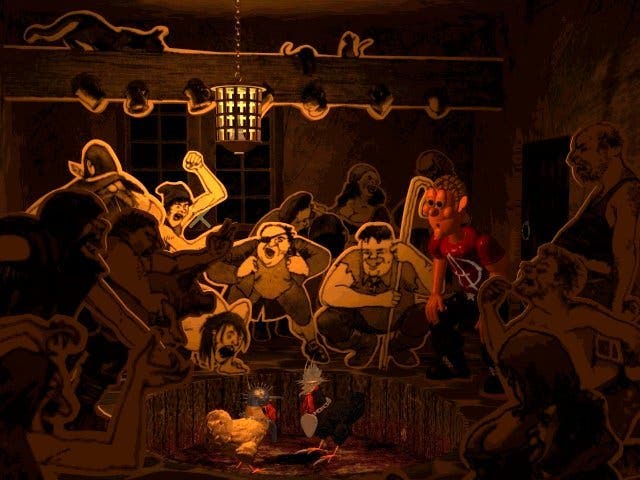Sex 'n' Drugs 'n' Rock 'n' Roll
Jon Hare's account of a historical monument to over-ambition.
Sensible was one of the last big developers to move onto 3D, mainly because we were so successful on the 16-bit machines such as the Amiga, Megadrive and Atari ST. By the time we did eventually get around to using 3D art in our games we were two years behind most other top development companies, and had a lot of very basic lessons to learn regarding how to best create, manage and program these resources.
To give an illustration of how technically unrealistic some of the art creation was in Sensible during these early stages, the very first character model made for the game (one of the backing singers in the Creamy Dreamy Lady video) was created in such a fashion that one of her eyelashes contained 10,000 polygons.
1996: By this stage the art and sound production for the game was in full swing. I punctuated my time in our office in Saffron Walden with regular visits to Pinewood Studios where Richard was recording and producing all of the sound.
I used to really look forward to those days going there with a song I had just written. I'd play it to Richard, record it, and leave it for him to work his magic on it so I would come back the following week to hear a fully polished production masterpiece, and he loved the project as much as I did. Richard had already lived the rockstar dream when he had his own recording deal from a top record label when he was in his 20s back in the 1970s, but - by his own admission - he had blown it at the time by being too pedantic and up his own arse.

SDR was the chance for him to show his musical prowess and to emulate the arrangements and production styles of many different kinds of music. Plus, as luck would have it, the Derek and Clive/Viz-style schoolboy humour in the game was right up Richard's street. It was about this time that it became clear to Richard and I that this project was more than just a game for us, it was an artistic mission. It was like our calling.
It was in this year that I also met up with a guy who was employed by Warner to look at the way they could integrate the various media that they published, such as music and games. I had huge respect for him as he was the producer of Tainted Love by Soft Cell, one of the groundbreaking records in terms of production. However it became pretty apparent that he just didn't 'get' the idea that they were a virtual band who could be turned into a virtual music act that had their own game (and possibly cartoon series) a bit like Max Headroom. Or maybe he just didn't like the music. Either way, this was the first sign that our dream of SDR being signed to a major media company was starting to look a bit less rosy.
Believe it or not, in 1996 the art that you see in these videos today was pretty state of the art. In those days everything had to be rendered out in a painfully slow process, and our video director, Wes Dunton, and video animator, John Lilley (JL) would often work through the night while all of the machines in the office turned into farms to render out their animations. The look that the videos were giving the game was very exciting to us at the time.
However, the programming side of the game was starting to reveal some serious problems. We had been careless in our selection of lead programmer and now his incompetence was starting to show. Not only was the adventure engine he had written totally flawed, but his 'yes man' tendencies whenever he discussed any game issues with me now meant that I was a designer working with no adequate reality checks. The game plot I had written, by this stage, meant that the game would have to come out on 16 separate disks. Clearly it was time for some changes to take place.
By 1997 we had pushed forward with the art even more, the music was coming along really well and so were the sound effects and speech, which was recorded at Pinewood with professional actors under the supervision of Richard and myself. The scripting was a lot of hard work for me to write: by the end of the project I had written 1,500 pages of technical script for this huge adventure story, but it was clear all was not well. I remember one night sitting in the office room in my home writing the script for yet another scene for the game and thinking that it's a white elephant. It's just not going to happen. Something felt wrong about it. I was sitting there making up all this rubbish about getting a blowjob on an aeroplane and I couldn't believe that it was really going to make it onto the shelves. Life is never that easy. How right I was.







